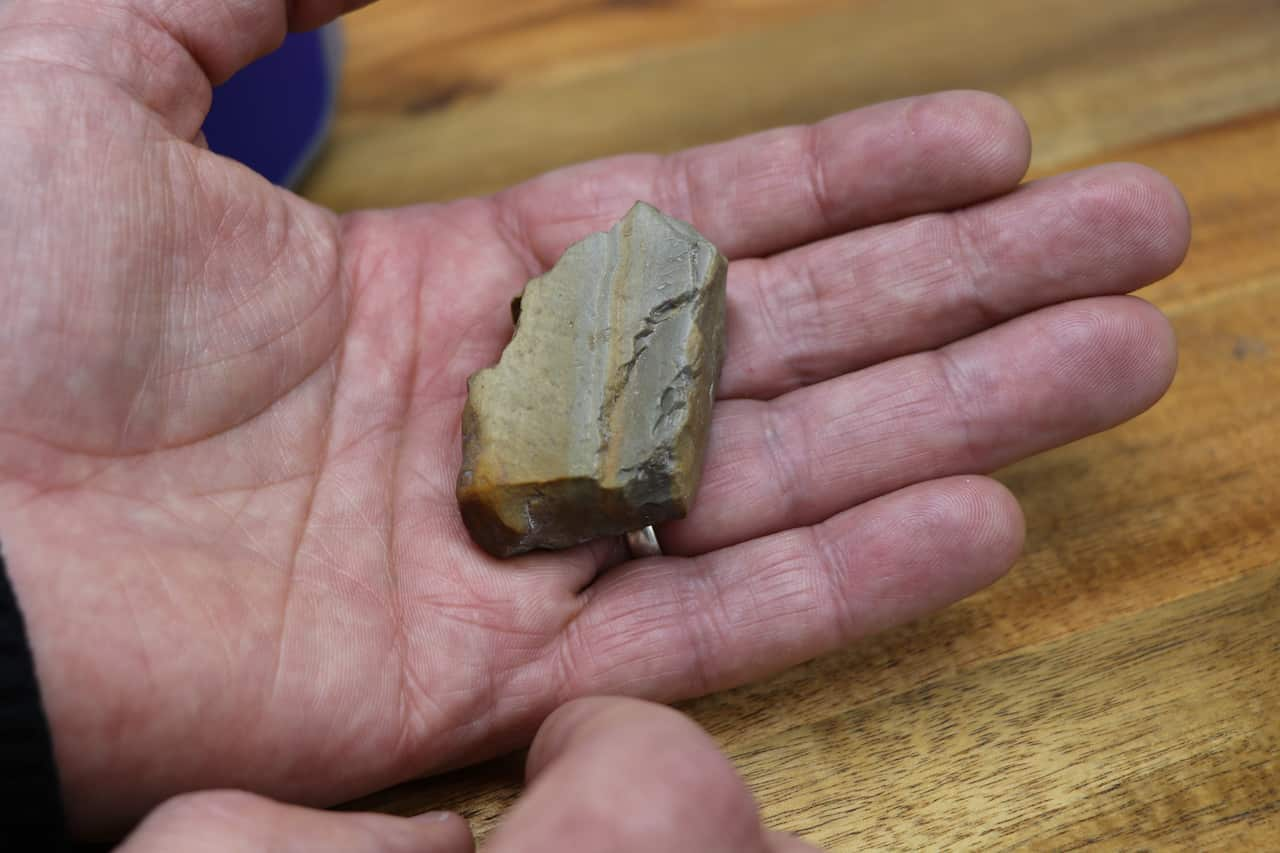If you thought the only things Indigenous Australians invented before colonisation were a few musical instruments, hunting spears and clapping sticks, think again.
Australia’s First People have lived on this continent for tens of thousands of years, surviving in some of the harshest conditions using hand-forged tools.
Twenty-First Century technology now offers people a sophisticated snapshot at how some Indigenous people lived, worked and traded thousands of years ago.
With the permission of Traditional Owners, researchers organised a 3D scan of 6500-year-old artefacts excavated from a site in Newcastle, 160km north of Sydney. Greg Blyton, a historian from the University of Newcastle, is part of the project which is called Deep Time Virtual Reality.
Greg Blyton, a historian from the University of Newcastle, is part of the project which is called Deep Time Virtual Reality.

One of the 5,500 artefacts recovered from the Newcastle West dig. Source: Supplied
“These are not just stones and rocks, they are the living and breathing products of a culture and a people that was changing and evolving all the time,” he said in a statement.
“I think people and technology have got to work together to try and realise that this country’s history of human occupation is a long one and every Australian has a right to share that history.”
So far, roughly 50 stone tools have been scanned and uploaded into a digital platform which can be viewed with virtual-reality headsets.
Dr Blyton said the project provided people with the opportunity to experience the “essence and integrity” of First Nations people 6,500 years ago.
“It’s important to remember that this was the work of a people who should never be forgotten or omitted from the story,” he said.
Gionni Di Gravio, an archivist for the university, said each of the 50 objects have been given a call number with information about it to maintain the accuracy of what it was used for. “We’ve tried to create a 3D representation of the dig at Newcastle West by placing the scanned artefacts back into their original positions as they were found when the dig was underway,” Mr Di Gravio said.
“We’ve tried to create a 3D representation of the dig at Newcastle West by placing the scanned artefacts back into their original positions as they were found when the dig was underway,” Mr Di Gravio said.

Drawings of objects are often the most informative way of documenting artefacts because the lines in these drawing contain technological information. Source: Supplied
“Archaeologists are very similar to forensic scientists and archivists in that we like original order. The scene tells a story as well as what’s found in it, so you have to preserve where things are found.
Ann Hardy, a historian who oversees the 'Living Histories Digitisation Lab', said the project was contributing new knowledge about Aboriginal culture and society.
“This project has revealed that Aboriginal people existed here six-and-a-half thousand years ago and has brought new knowledge that it was a place of industry,” Dr Hardy said.
“It’s not a site where just a few random stone tools were located, it was an actual site where stone tools were made and traded.”

